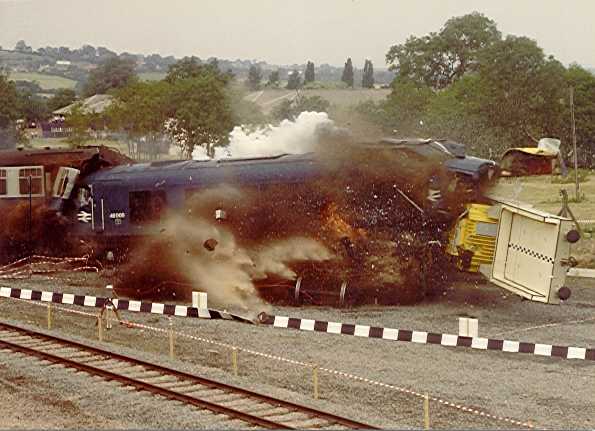Hi, just wanted to ask a quick question regarding some modernization era diesels. I'm trying to modify the physics of these locomotives in Train Simulator Classic 2024 because currently the Class 52 model can go 100 mph pulling 20 coaches, which is something I don't even think a Deltic could do lol
How fast would these following BR Classes top out at pulling 10 Mk1 Carriages on level track?
Class 42/43
Class 44-46s
Class 47
Class 50
Class 52 Westerns
Class 55 Deltics
Design speed and actual achievable speed are of course different things.
Hydraulic transmission is also less efficient than electric generally, at converting engine power to usable traction power.
I'm quite interested in train performance generally, so I've read many books and articles on such matters.
Going off that, the maximum speeds I'm aware of that have been achieved by the classes you list are:
42/43, these were designed for 90mph, however the 42s experienced riding issues early on so were restricted to 80mph pending rectification. Nevertheless, some of the class were recorded topping 100mph on trains such as The Bristolian.
44-46s. The 44s had a poor reputation hence being largely restricted to freight from early on, the 45s were well liked and could outperform a 47 due to having more field diverts providing better acceleration throughout the speed range. 46s had a reputation as being notably weaker than 45s. 45s would top 100 easily, not so sure on 46s.
47s, obviously they were derated, so while in early years they could give Deltics a run for money on the more stopping ECML trains, afterwards they were notably more sluggish particularly above 80mph. The highest recorded speed I'm aware of is 115mph on 7 coaches.
52s, good at getting going and with heavy loads but the specific hydraulic transmission ratios used weren't well matched to the torque curves of the engine, consequently a Western nearing its overhaul could struggle to achieve its rated 90mph. A healthy one would touch 100 though, there are a few records of that in their early days; much less so in their last years.
55s, well so much power in a very light loco and completely unlike anything before in terms of performance, other than getting moving from a stand theory performance exceeds all the other classes mentioned. They were maintenance heavy, but would easily take 12/13 coaches to 100mph. Fastest speed I'm aware of is 125mph, albeit down Stoke Bank, but there are plenty of records of them topping 110mph in their later years when HSTs had ousted them from the top expresses and they were relegated to the York semi-fast and Hull services primarily.

